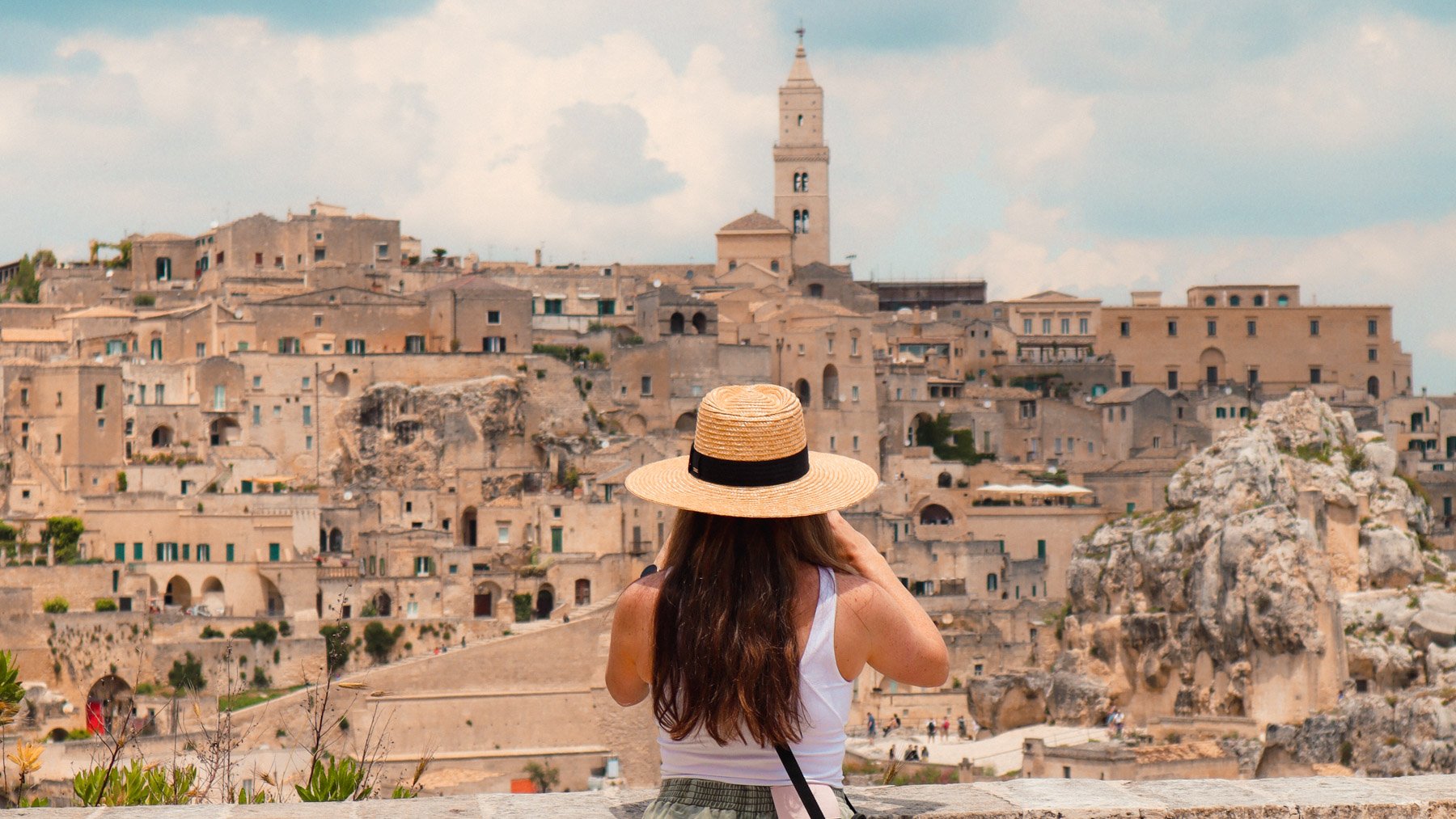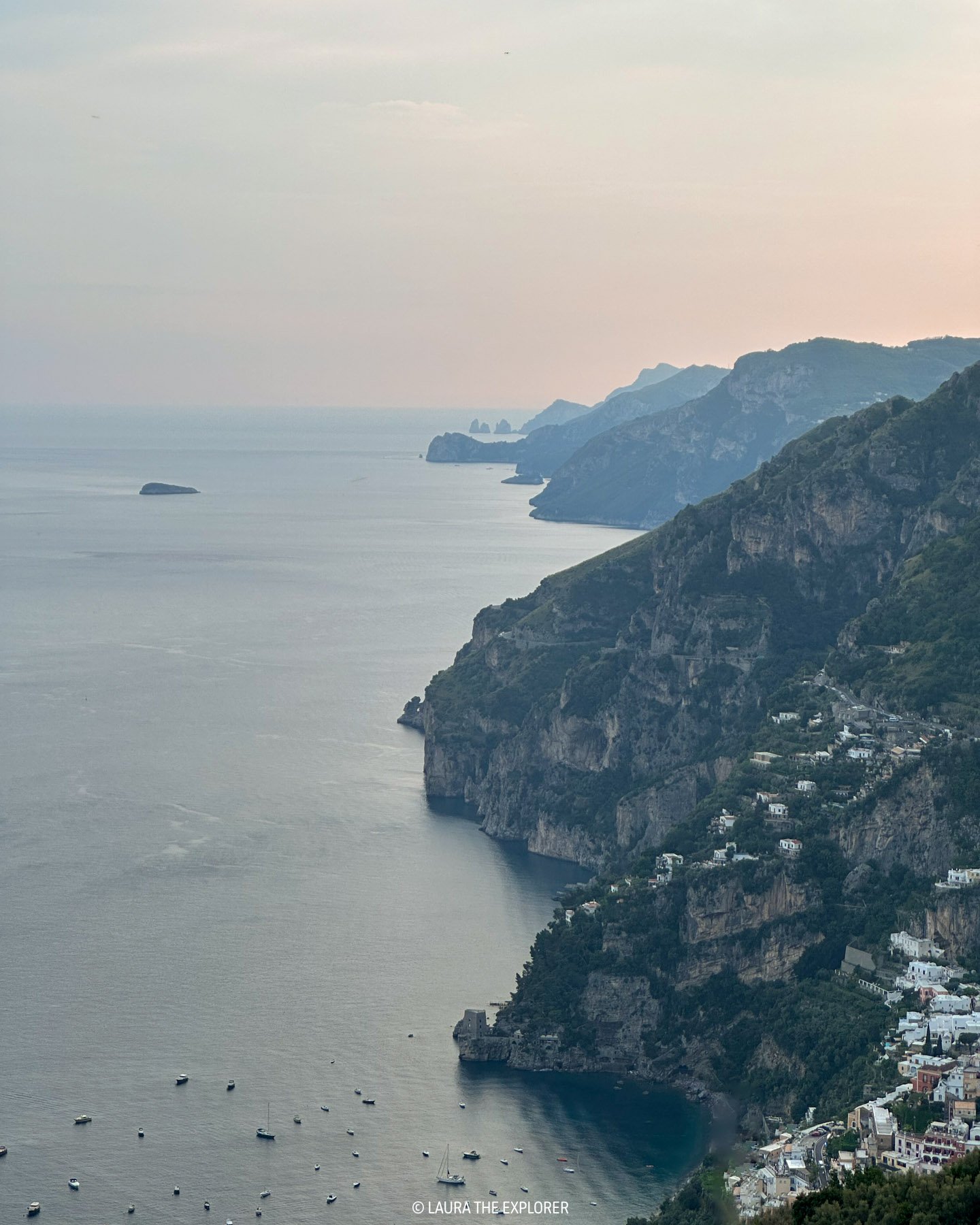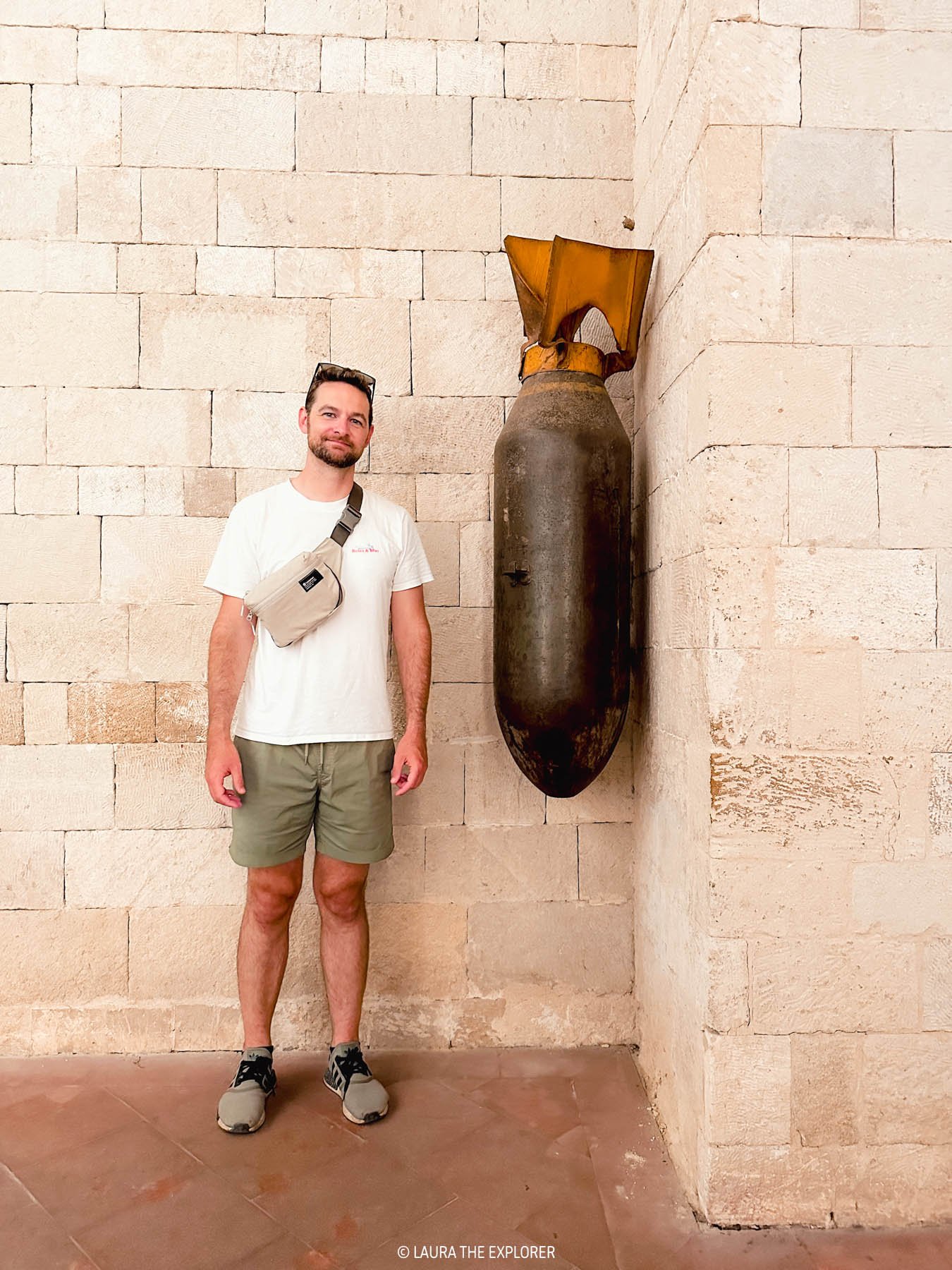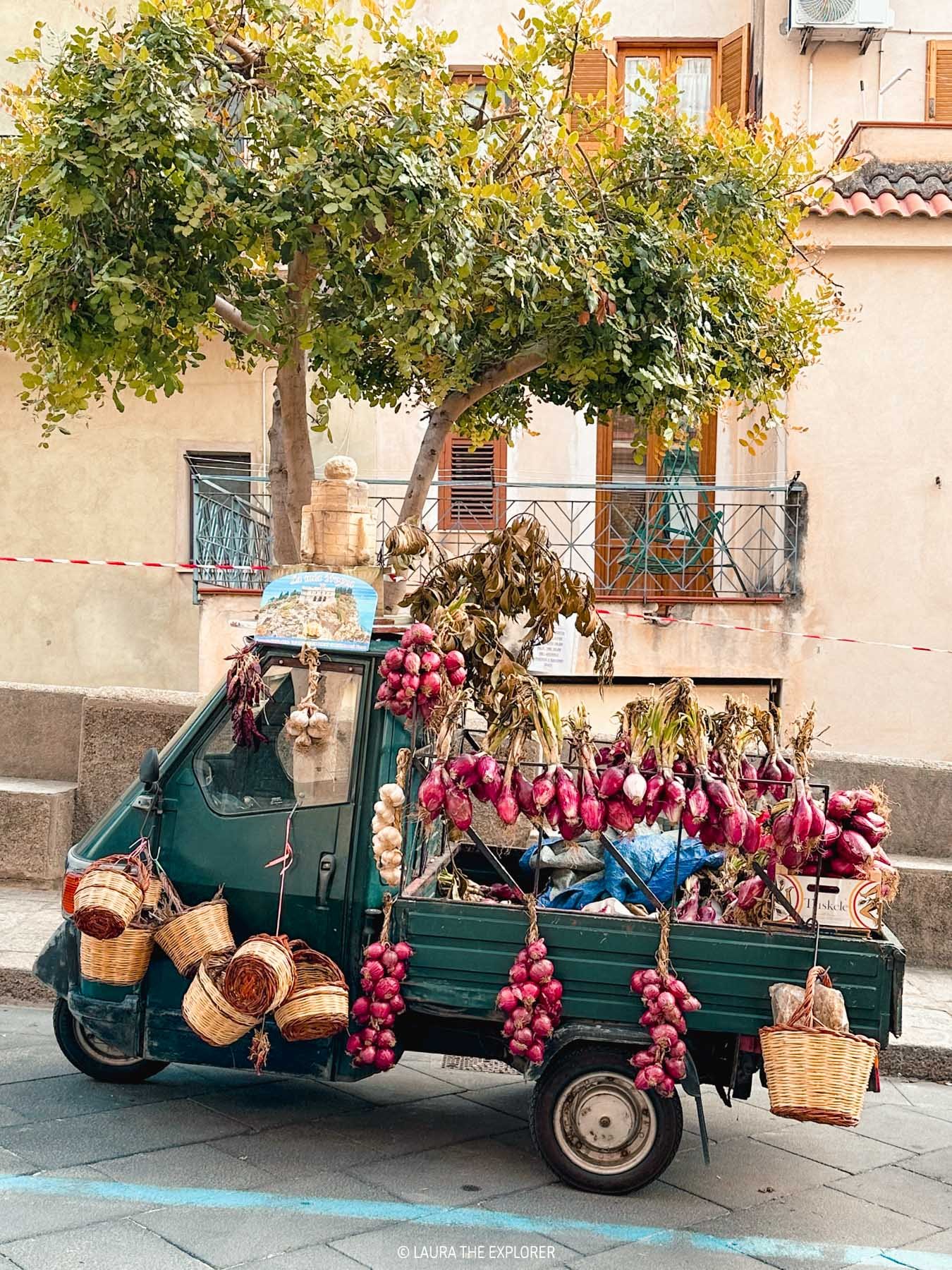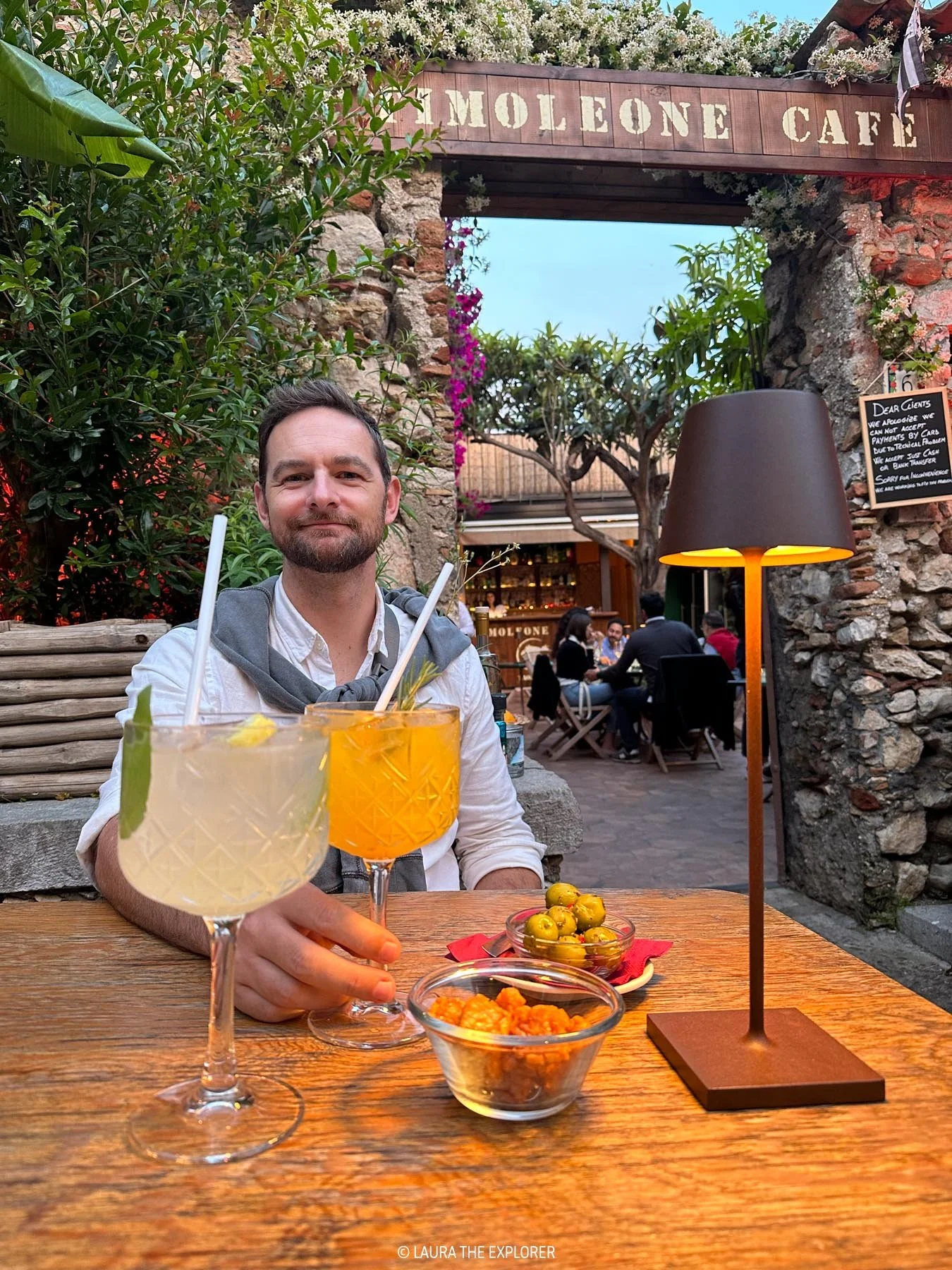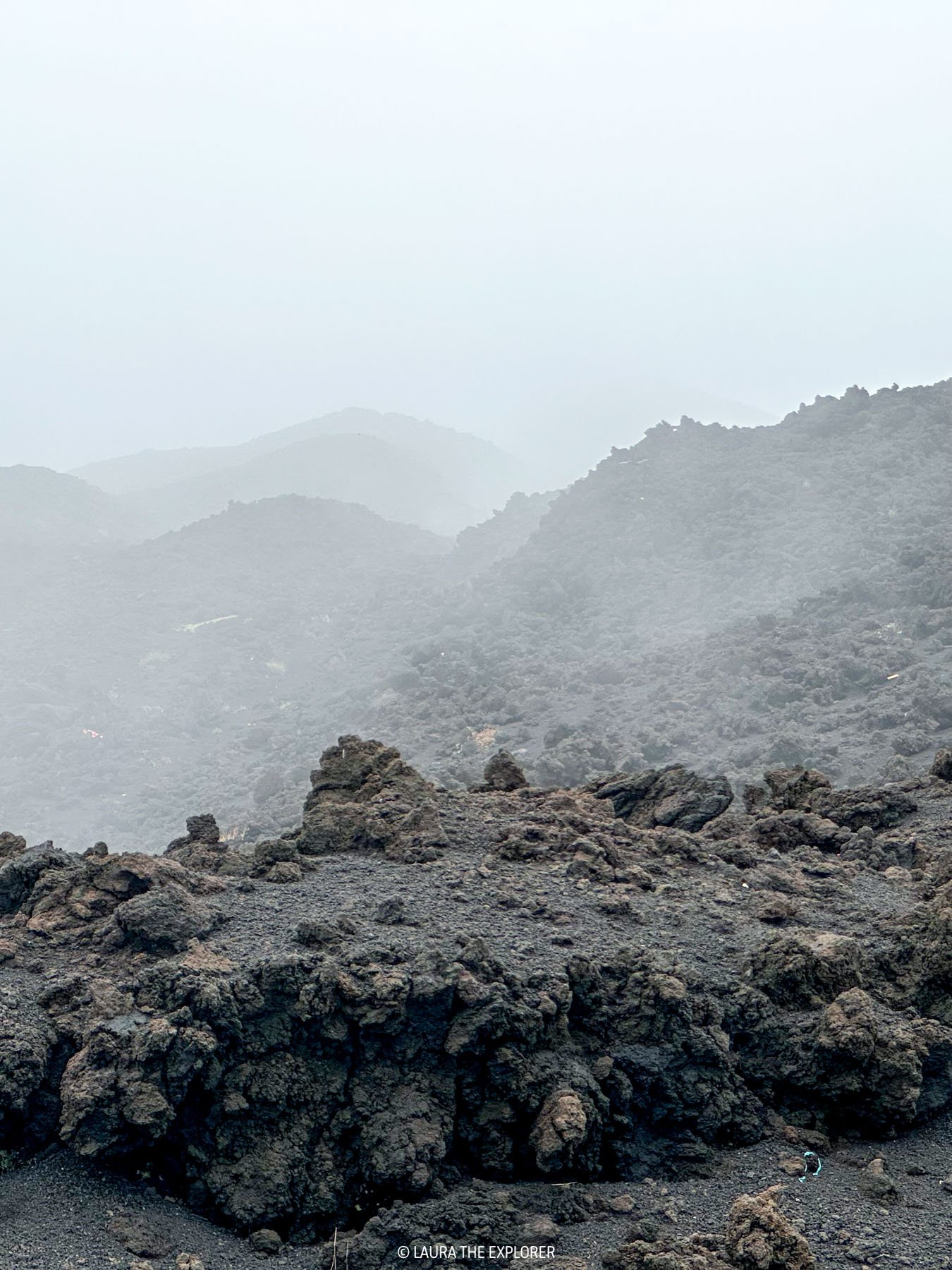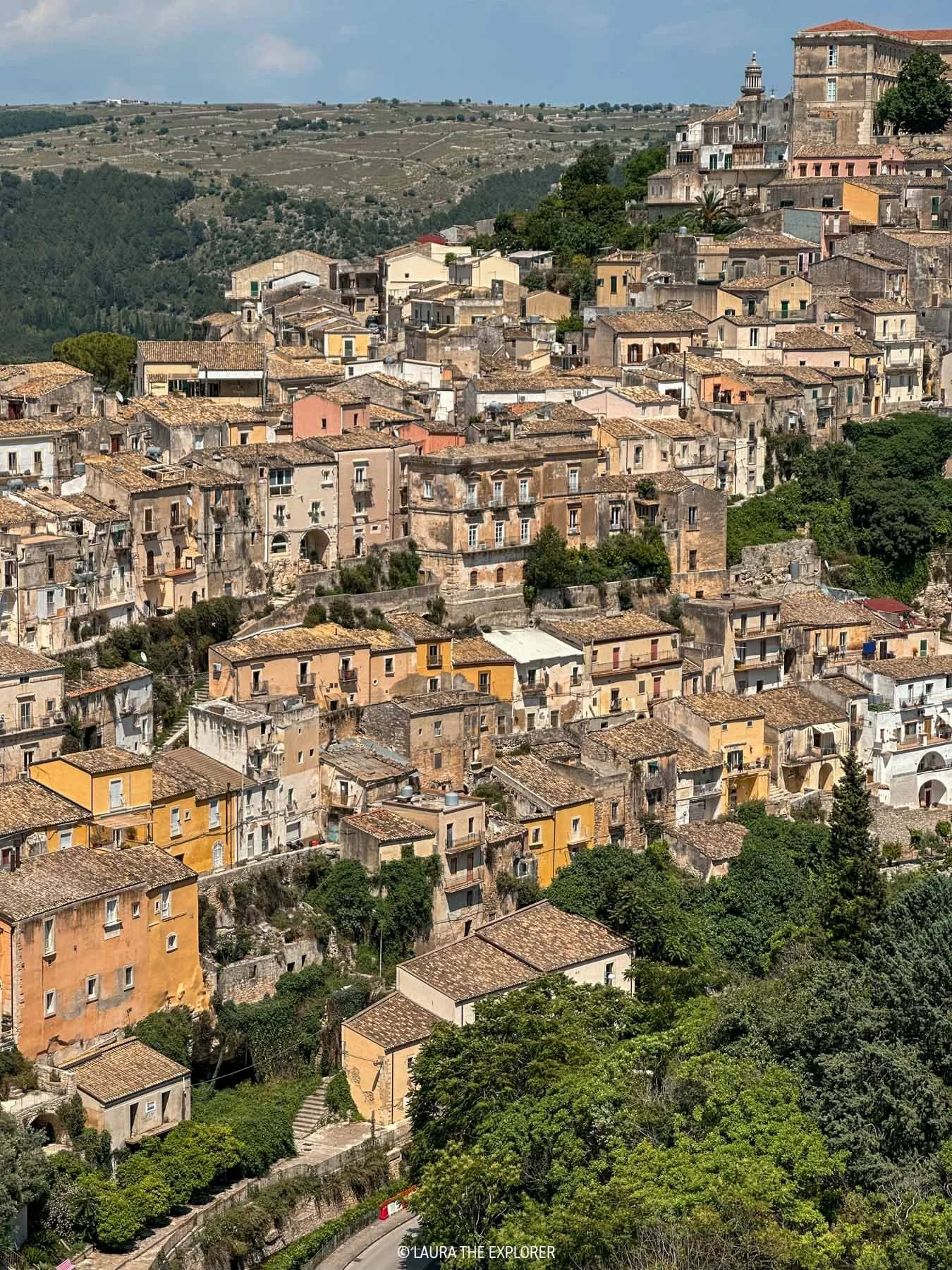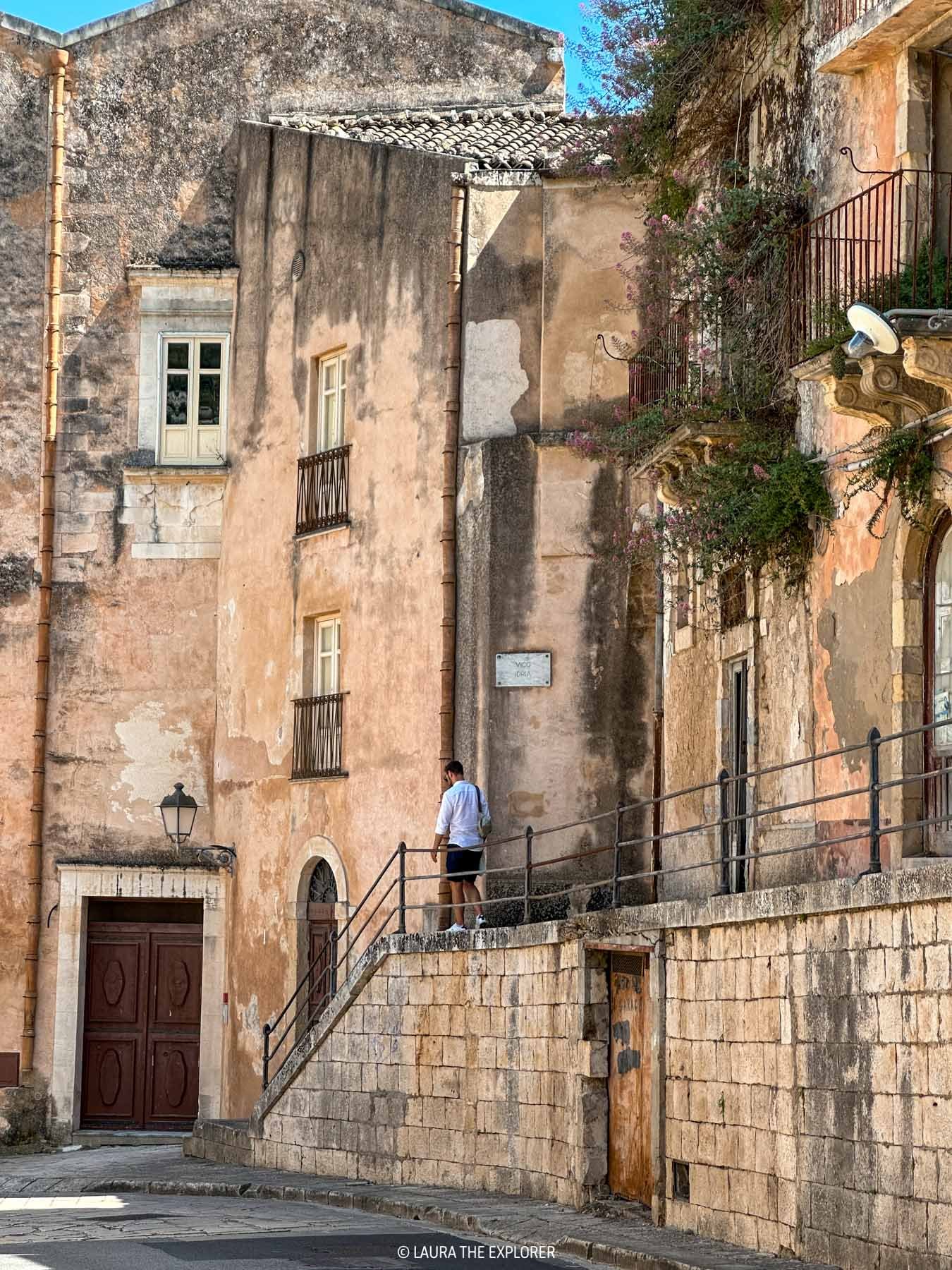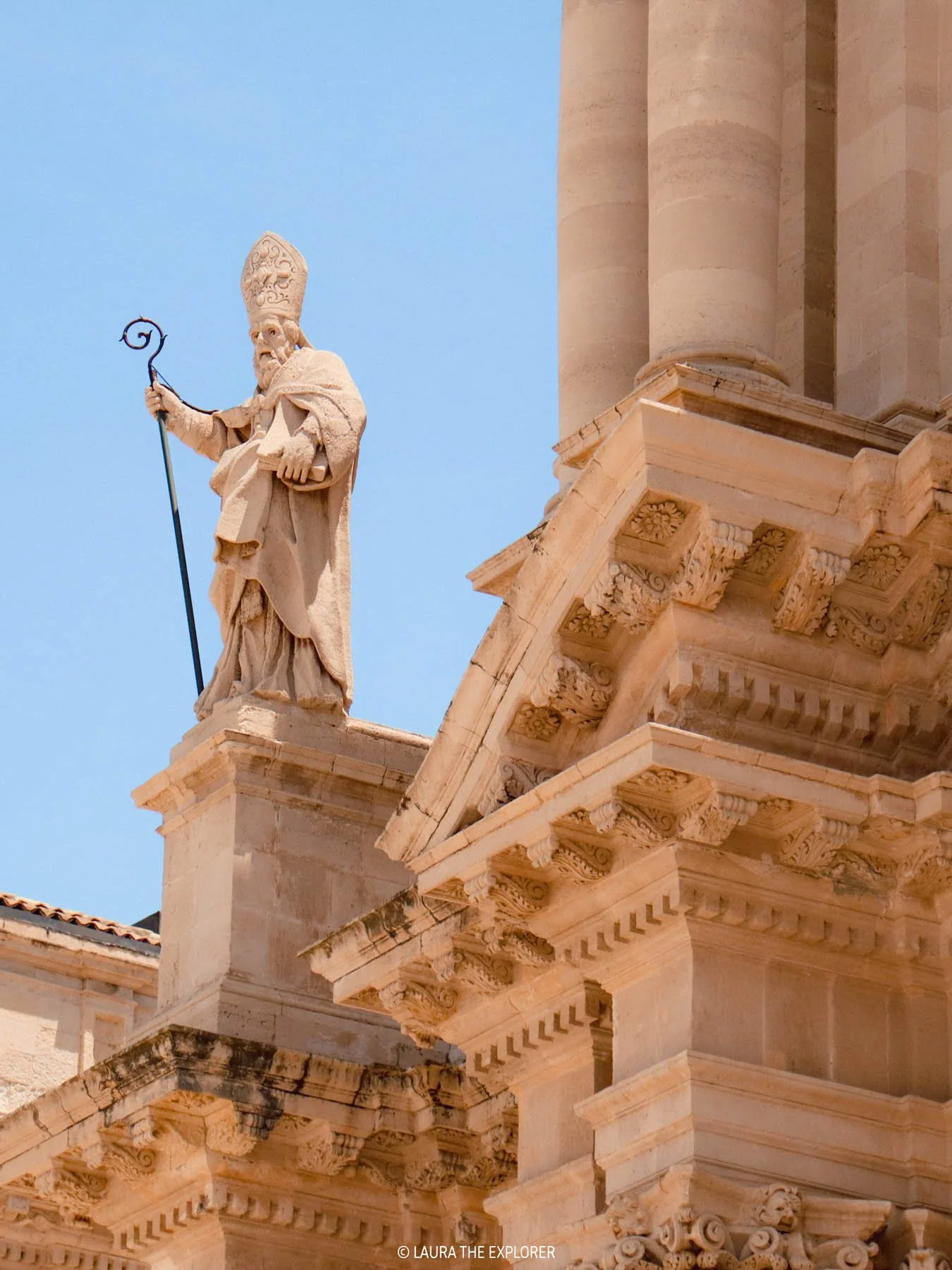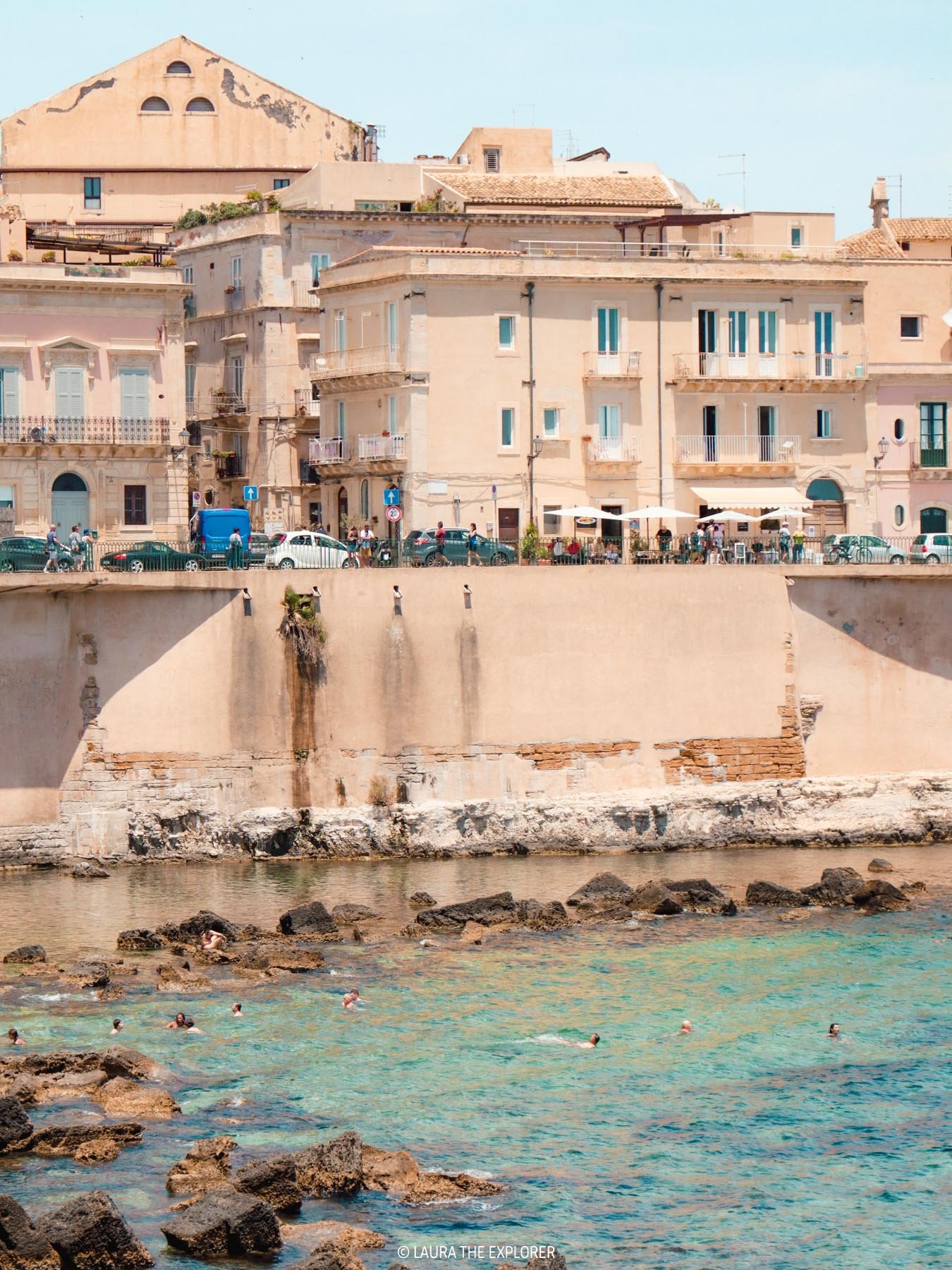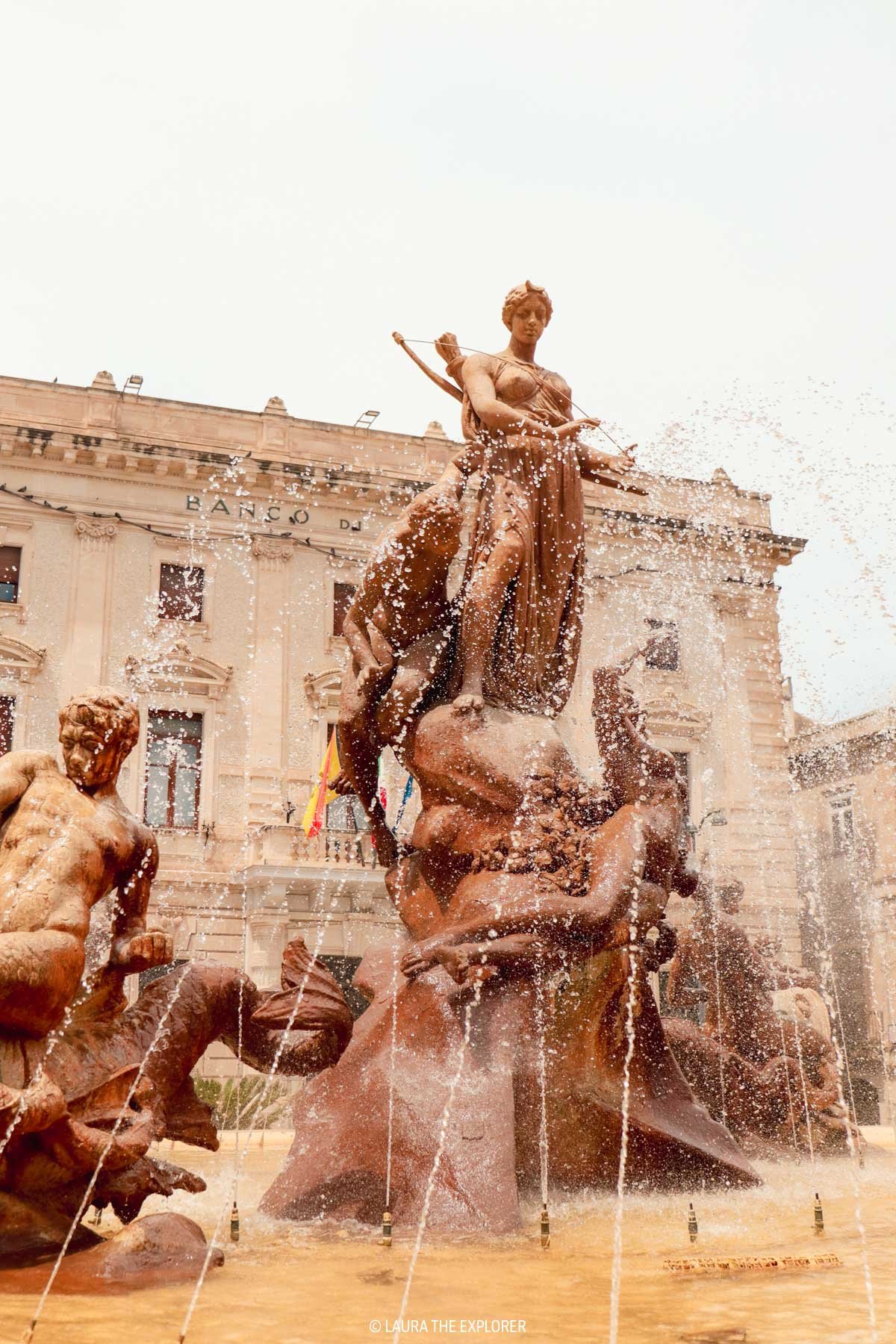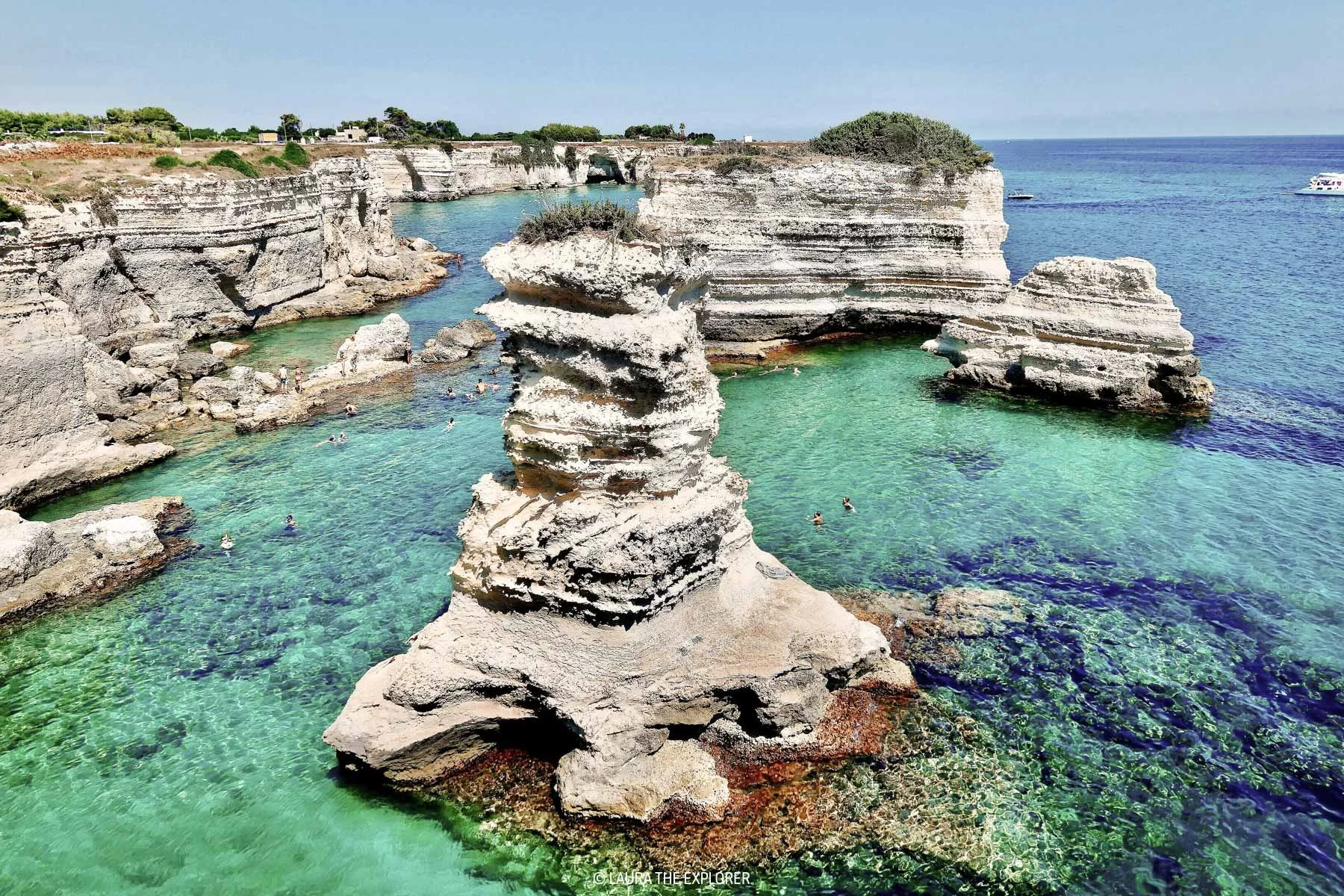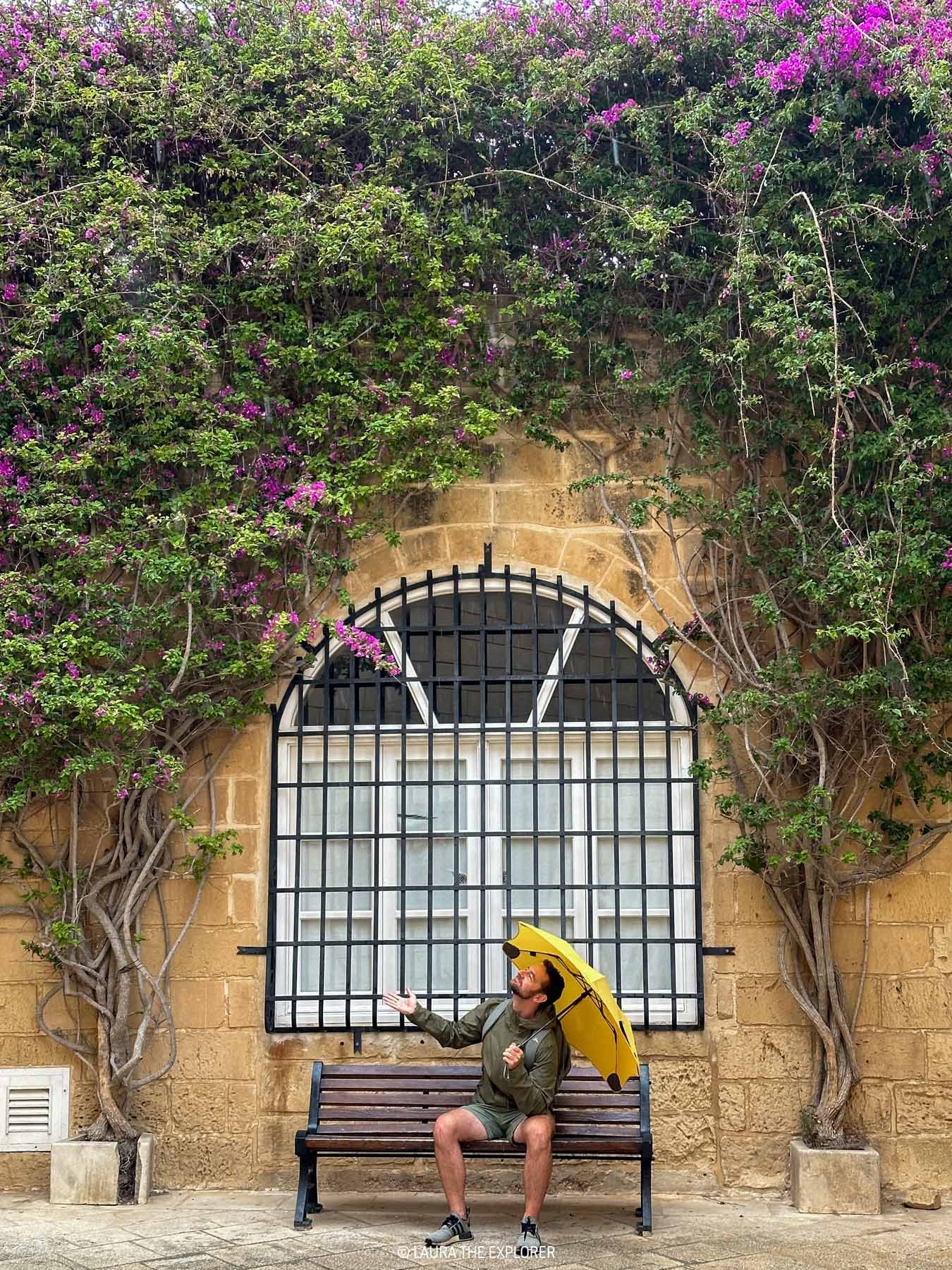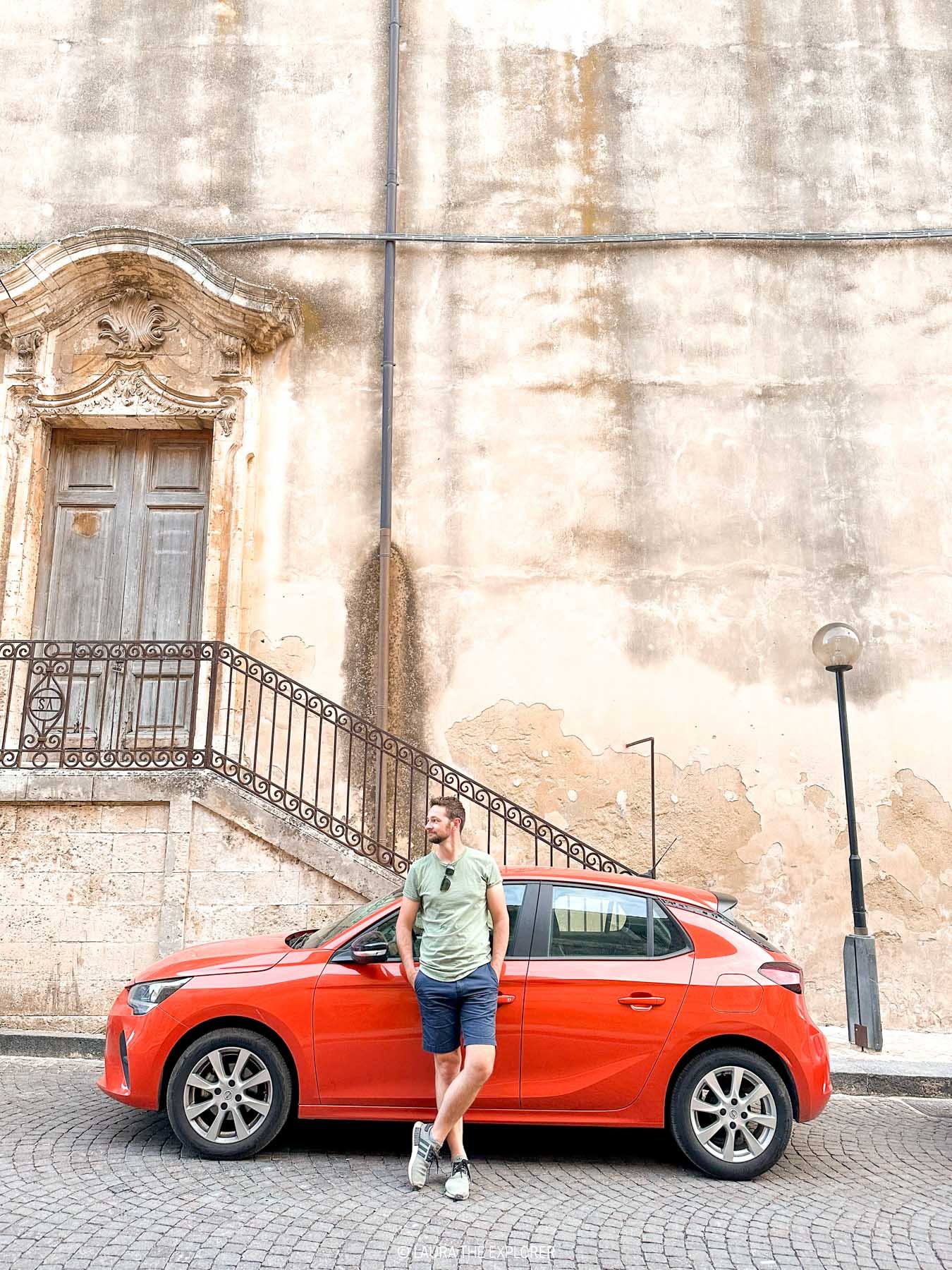Southern Italy Itinerary & Travel Guide
A summer road trip around Southern Italy is one of those bucket list adventures.
I can almost taste the luscious lemon gelato, hear the sound of the sparkling blue sea as it gently laps the shores, and feel the warm summer breeze that cooled gently as we dined al-fresco… is there anything dreamier than a holiday in Southern Italy?
We spent a glorious six weeks exploring from Naples down to Sicily, and based on that experience, we’ve crafted this Southern Italy itinerary (14 days) on what we would do with only two weeks to explore. But if you’ve got a little more time, even better! We’ve also added in options for extending your itinerary.
Featuring iconic destinations such as the cliff-clinging towns of the Amalfi Coast, the caves of Matera, the white-washed villages of Puglia, the long coastlines of Calabria, and the historic centres of Sicily, this travel guide includes all of the must visit locations on a Southern Italian road trip itinerary.
From where to go, what to pack, and how to survive driving in Southern Italy, here’s everything you need to know when planning your Southern Italy Itinerary.
A quick heads up: This post may contain affiliate links. I only recommend products or services that I use (and love!) personally. You won’t pay anything extra if you make a purchase through one of these links, but we’ll get a small commission which helps keep the blog running. Thanks for your support!
Southern Italy Itinerary
& Travel Guide
Southern Italy Itinerary Map
14 Day Itinerary
Naples & Amalfi Coast
Matera
Puglia
Calabria
Sicily
Options to add on destinations
Best time of year to visit
What to pack for a roadtrip
How to get around Southern Italy
Taking the ferry over to Sicily
SOUTHERN ITALY ITINERARY MAP
Here’s my map of all the destinations mentioned in this Southern Italy Itinerary (14 days to 21 days)
SOUTHERN ITALY ITINERARY (14 DAYS)
DAY 0-1 | NAPOLI (NAPLES)
Look beyond Naples’ gritty reputation as this history-rich pizza capital of the world has a lot to offer. With grand royal palaces, ancient castles and incredible Baroque art all within walking distance along narrow cobblestone streets, Napoli is both a great city break and foodie heaven.
THE TOP THINGS TO DO IN NAPLES
Wander Spaccanapoli, the street the cuts Naples, in the Centro Storico - swing by one (or more) of the churches in the area, like the Duomo di Napoli or Basilica Santa Chiara.
Head up through character-filled Quarteri Spagnoli and check out the Maradona shrine - Napolitanos take their football seriously!
Get a birds eye view of the city and the islands in the bay beyond from Castel Sant’Elmo.
Experience Naples’ regal history at Castel Nuovo, Castel d’Ovo, or Capodimonte Palace.
For a different side of Naples, take an underground tour, such as Subterranean Naples.
Supplement a visit to Pompei with the National Archaeological Museum, where you’ll find many of the treasures uncovered in Pompei, such as mosaics, sculpture and everyday items.
There’s so much more to Naples that waiting in line for a movie-famous pizzeria! For more things to do in the wonderful city of Naples, check out this post:
WHERE TO STAY IN NAPLES
The best place to stay in Naples is in the Historic Centre (Centro Storico). It’s where you’ll find the best sights and the best pizza, and is close to the both the train station and ferry terminals.
BACKPACKER | Ostello Bello Napoli this award-winning hostel is well located just off Via Toledo.
MID-RANGE | Nova Relais close the main attractions, this B&B is perfectly located for wandering the streets of Naples.
LUXURY | Hotel Piazza Bellini for old-world Naples charm.
WHERE TO EAT IN NAPLES
Naples is one of the top foodie destinations in Italy, so you’re spoiled for choice!
Start the day with an espresso and a sfogliatella (pastry) from Pasticceria Poppella.
Eat at one of Naples’ OG pizzerias - my faves were Starita and 50 Kalo.
Hit Tandem for Naples’ delicious version of ragu (bolognese sauce) stuffed in a delicious bread roll.
For food on the run, grab a pizza portafoglia (folded pizza) from Antica Pizzeria di Matteo.
Or, swing by Passione di Sofi for a cuoppo (fried snacks).
To finish off the day, grab a baba (rum-soaked cake) with pistachio cream from anywhere along Via Toledo.
DAY 2-3 | THE AMALFI COAST
The Amalfi Coast conjures up dreamy images of the perfect Italian summer, with sunny days sparkling blue water, and the most refreshing lemon gelato.
And with it’s picturesque boat trips, endless options for luscious ocean swim, waterfront seafood restaurants galore, and iconic windy coastal road, the Amalfi Coast really is a dream Italian destination.
GETTING TO THE AMALFI COAST FROM NAPLES
There are a few different ways to get around the Bay of Naples to the Amalfi Coast - via ferry or train to Sorrento, from where you can catch the Amalfi Coast bus or perhaps rent a scooter.
BY FERRY | The fastest and most picturesque option. Ferries depart multiples times per day from Naples to Sorrento (45 mins, from €16), or seasonally from Naples to the Amalfi Coast direct (approx 2hrs, from €32). I’d recommend checking the schedules at Ferry Hopper, but then booking directly through your preferred ferry operator’s site. Tickets can also be purchased direct from the ferry terminal in Naples, but be aware that sailings may sell out at peak times.
If ferrying only to Sorrento, from here catch the local Sita bus to reach destinations along the Amalfi Coast - check the latest schedules. In peak season, expect congestion along the bus routes.
BY TRAIN | The cheapest option. Trains run from Naples to Sorrento on the Circumvesuviana line (approx 1hr 30mins, €3,60), a locally operated train line that unlike most Italian trains, is not part of Trenitalia. Tickets should be purchased from the ticket office at either Napoli Porta Nolana or Napoli Piazza Garibaldi stations. Allow extra time as we found the ticket machines were always broken and we had to queue for tickets. From Sorrento, catch the local Sita bus as per above.
BY SCOOTER | Rather than catch public transport from Sorrento, or between towns along the Amalfi Coast, I’d highly recommend renting a scooter. We hired one from Jollyrent in Sorrento but there are many options along the coast. It was a great way to explore the various towns, including some out of the way restaurants. Parking is pretty easy to find, but do expect to pay for it.
BY CAR | If you do decide to pick up a rental car from Naples, be aware that driving on the Amalfi Coast will be a slow process, and parking will be difficult and expensive. Whilst renting a scooter or using public transport will be less stressful, having a car will help reach some of the more remote towns along the Amalfi Coast.
THINGS TO DO ON THE AMALFI COAST
Head up to hilltop Ravello and admire the views from Villa Cimbrone and Villa Rufalo.
Eat a gelato from a giant lemons on the steps of the Amalfi Duomo.
Hike the Sentiero Degli Dei (Path of the Gods) from Agerola to Nocelle.
Have a swim at picturesque Fiordo di Furore.
Shop up a storm at the many Positano boutiques.
Take a scenic boat tour, or even hire your own boat, to explore the rugged coast.
WHERE TO STAY IN THE AMALFI COAST
Accommodation is generally on the expensive end, especially within the hub of Positano, whereas hostels can be found around the coast in Sorrento. With a plethora of towns and villages to choose from, pick one that suits your travel style. Positano is great for those keen to wine and dine amongst the hustle and bustle. Keen walkers with a vehicle may prefer to stay up in a hilltop town such as Ravello.
We stayed in the quiet yet picturesque village of Minori, which is well connected but retains it's original charm.
BACKPACKER | Florida Hostel in Sorrento is a great choice for backpackers or solo travellers on a budger.
MID-RANGE | Villa Paradise Resort is located close to the Path of the Gods and with free parking, this is a great base for an adventurous roadtripper.
LUXURY | The Amalfi Coast has no shortage of luxury hotels, but La Sirenuse is the most iconic.
WHERE TO EAT ON THE AMALFI COAST
Eat the most delicious rustic meal of your life at La Tagliata perched above Positano, book for sunset.
Sample the freshest seafood at Giardiniello in Minori.
Splurge on a cocktail and a view at Franco’s Bar in central Positano.
Grab an espresso as you browse iconic Amalfi ceramics at Ceramiche Picadilly.
Swing into G.A.S. Bar for a quick pitstop along the coast.
Eat al fresco at one of the many restaurants that line Viale Pasitea.
DAY 4 | MATERA
Matera is one of the most unique destinations that I’ve visited in Italy, and maybe even the world. The oldest city in Europe, it was once known as the shame of Italy due to the poverty of it’s cave dwelling residents, but this town now has an improved quality of life, and has embraced it’s roots to now prosper on it’s uniqueness.
The two sassi (cave districts) are set on either side of a small hill, and with only a couple of roads for access, the best way to explore this town is on foot - up and down staircases and along meandering pathways. There’s no one ‘big’ attraction to see in the sassi, rather, it’s the experience of discovering the sights along you own route.
GETTING TO MATERA FROM THE AMALFI COAST
BY CAR | The travel time from the Amalfi Coast to Matera is about 3 and a half hours, depending on where on the coast you’re departing from.
BY PUBLIC TRANSPORT | Getting from the Amalfi Coast to Matera by public transport is doable, but takes a bit longer. Catch the local Sita bus to Salerno, and from here take MarinoBus on to Matera (approx 5hrs, €30).
THINGS TO DO IN MATERA
The joy of Matera is simply wandering around the maze-like pathways of the two sassi (cave districts), you could spend all day just wandering!
If you're short on time or want to learn more about this history of Matera, consider a guided walking tour.
Don’t miss the Chiesa Rupestre di Santa Maria di Idris, built into the rock.
Make your way up through the sassi to Basilica Cattedrale di Matera.
Take in the panoramic views from Convent of Saint Agostino.
James Bond buffs should be sure to head along Via D’Addozio and Via Muro, where scenes were filmed. The iconic bridge is actually in the nearby town of Gravina in Puglia.
WHERE TO STAY IN MATERA
Matera has some of the most unique accommodation in the world! I mean, how often can you say you stayed in a cave! Just remember to consider parking if travelling by car - there's no vehicle access to the sassi.
BACKPACKER | Fra I Sassi Hostel is nestled right in the sassi, a perfect base in a historic building.
MID-RANGE | Pietragialla is set in a historic cave, on one of the streets featured in the James Bond movie.
LUXURY | The Amalfi Coast has no shortage of luxury hotels, but Quarry Resort is a beautifully appointed hotel with views over the sassi.
WHERE TO EAT IN MATERA
Matera has some really unique cuisine, thanks to the traditionally poor demographics of the area, that you’re unlikely to find in other regions of Italy.
I loved the broad beans and chicory as a completely new and exciting kind of pasta sauce, and nibbling on some local caciocavallo cheese, which is produced in the area.
Try some local dishes from the traditional Morgan Ristorante.
Have a cocktail and a bowl of the favourite local snack, cruschi (dried peppers, not spicy) at Zipa Cafe.
Stop by Panificio Quintano for a quick breakfast baked good, or snack on the go.
DAY 5-7 | VAL D’ITRIA
The Val d’Itria (Itria Valley) is an idyllic area of Puglia, towards the north coast between Bari and Brindisi. Think olive groves lined with stone walls and white-washed hilltop villages. With an array of some of the most beautiful villages in Italy, our recommendation is to pick a base and use that to explore the area. From seaside villages, to roman ruins, to the unique architecture, this pocket of Puglia is a must visit destination.
GETTING TO VAL D’ITRIA FROM MATERA
BY CAR | The drive from Matera to the Val d’Itria is a short but scenic one, taking only about an hour, or an hour and a half depending on your exact destination.
BY PUBLIC TRANSPORT | Most public transport routes from Matera to Val d’Itria will take you via the main hub of Bari. Using a combination of buses and trains depending on the destination town, expect the journey to take 2-4hrs.
THINGS TO DO IN VAL D’ITRIA
With so many villages to discover, split your time with a half day in some of these highly recommended destinations and experiences:
Swim in the instagram-famous but still incredible impressive cove at Polignano a Mare. And be sure to take a tour of the caves from the water.
Wander the streets of Alberobello, full of mesmerising trulli (small, round, stone houses).
Definitely do 'pass go' as you uncover the hidden gems of seaside fishing village, Monopoli.
Visit Locorotondo at sunset from an aperitivo amongst the vines.
Take a dip amongst the roman ruins of Calette di Torre Cintola.
Appreciate the architure of Ostuni, known as La Perla Blanca (the white pearl).
Indulge at a long lunch at one of the region's masseria (farmstays).
If you're travelling without a car, take a day tour of some of the villages, rather than rely on less frequent buses.
WHERE TO STAY IN VAL D’ITRIA
If travelling by car, the valley is your oyster. Pick somewhere central and use it as a base for various daytrips - we chose an amazing trullo nestled amongst olive groves within the triangle of Locorotondo, Martina Franca and Cisternino.
If travelling by public transport, you'll need to be a bit more strategic. The main train line runs from Bari to Brindisi, so consider staying in one of these hubs, or somewhere along the coast in between.
BACKPACKER | Olive Tree Hostel in Bari is highly rated and located close to the train station for easy daytrips.
MID-RANGE | for the ultimate Puglia experience, stay in your own trullo, like this beautiful Trulli del Maestro
LUXURY | Borgo Egnazia is luxurious Apulian resort, known for hosting A-list celebrities.
WHERE TO EAT IN VAL D’ITRIA
At the hands of Mussolini, Puglia became the breadbasket of Italy, and to this day it’s acres of crops provide some of the most delicious, fresh ingredients in all of Italy.
Start your day with a traditional frisella pugliese (traditional bread) from popular Olio su pane in Polignano a Mare.
Enjoy an aperitivo from Sottocoperta with views over the Porto Antico of Monopoli.
Sample local pasta orrcichetti (little ears) from one of the restaurants that line Monopoli’s Piazza Guiseppe Garibaldi.
Sip regional wine amongst the vines at Sírose on the side of Locorotondo old town.
Local legend Michele cooks up a delicious pizza at Pizzeria Casa Pinto where you should dine al-fresco in the alleyway or up on the rooftop terrace in Locorotondo.
Savour a classic Italian long lunch at highly-rated farmstay Masseria Il Frontoio near Ostuni.
DAY 8 | TROPEA
Perched on the edge of a cliff and, randomly, famous for producing sweet red onions, Tropea features beautiful sandy beaches and calm, turquoise waters. It’s still relatively off the radar for foreign tourists - despite being very popular with locals.
We chose Tropea as our stopover destination on the long drive from Puglia to Sicily as a quick beach break, and only a short drive down to the Sicilian ferry at port Villa San Giovanni.
For a more urban break, consider breaking your trip at the Calabrian city of Cosenza or Lamezia Terme. It splits the trip from Puglia to Sicily a little more evenly, but means a bigger drive before your ferry crossing.
GETTING TO TROPEA FROM PUGLIA
BY CAR | Today is the biggest drive of the trip, and crosses some diverse landscapes. You’ll start by following the coast, before heading surprisingly high up into the mountains of the Calabria region. The trip will take about 4-5 hours, depending on which Puglian village you start from.
BY PUBLIC TRANSPORT | Travelling by public transport from Puglia to Tropea, is quite time-consuming. You’ll need to bus to Lamezia Terme, then train down to Tropea. Alternatively, take the bus to Lamezia Terme and spending a night here to experience a little of Calabria, or continue by bus or train straight down to Sicily. The journey from Bari to Tropea will take about 7hrs and cost from €20.
THINGS TO DO IN TROPEA
Climb up to Santuario di Santa Maria on iconic Isola di Tropea.
Sneak through Grotta dell'Isola. This used to be a hidden beach, but recent construction has made it much more accessible. It was unfortunately closed for construction when we visited.
Watch the sunset from one of the clifftop views points, like this one on Via Abate Sergio or this one at the end of Corso Vittorio Emanuele.
Touch one of the unexploded WWII bombs hanging on the wall inside the Duomo di Maria Santissima.
Explore the coast and snorkel on a boat tour to Capo Vaticano.
WHERE TO STAY IN TROPEA
Parking can be tricky in the middle of town, expecially during peak season, so ensure you reserve a parking spot at your accommodation, or stay a little further out.
BACKPACKER | highly-rated Pangea Tropea is a short walk from the town centre and main beaches.
MID-RANGE | we had a great stay at Don Carlo Tropea. The hotel is perfectly located and the rooms were spacious, quiet, and we could book a car park. breakfast is served al-fresco on the rooftop terrace.
LUXURY | Tenuta Tropeano is a beautiful resort featuring views over the ocean.
WHERE TO EAT IN TROPEA
Try local ice-cream speciality tartufo from Caffe del Curso.
Grab some local red onions, meats and cheeses from grocer Enogastronomia Lorenzo for your own picnic on the beach.
Sample the local seafood at highly rated al-fresco restaurant Pinturicchio.
DAY 9-10 | TAORMINA & ETNA
With it’s sparkling blue water, roman ruins, walkable old town, and iconic island (a photo of this is what led me to visit!), Taormina is a busy but unmissable stop on a visit to Sicily.
Often known as the Capri of Sicily, and a popular stop on Mediterranean cruises, it really got thrown on the tourist map when The White Lotus based their second season at the San Domenico Palace.
It’s a also a great base for visiting Mount Etna. This iconic, active volcano is a huge draw card for Sicilian visitors, and despite it’s reputation for shutting down air traffic, hiking the craters is still a must-do activity.
GETTING TO TAORMINA FROM TROPEA
BY CAR | The trip from Tropea to Taormina is quite a fun one, as you’ll jump on the car ferry for the short journey over the Straight of Messina that divides Sicily from mainland Italy. The journey from Tropea to the port at Villa San Giovanni takes about an hour and a half. After the ferry, the journey from Messina to Taormina is about 45 minutes.
When driving into Taormina, coordinate your arrival carefully with your accomodation - the tiny, one-way roads are tricky to navigate and you’ll need your host to log your access through the ZTL.
BY PUBLIC TRANSPORT | The trip from Tropea to Taormina is also quite a fun one, especially if you get on the Intercity train that boards the ferry! The trains run from Tropea down to either Villa San Giovanni (to board the ferry!), or through to Reggio di Calabria, where you’ll walk onto the ferry, then grab a bus or train from Messina to Taormina when you reach the other side. The journey takes 4-5hrs and costs from €15.
THINGS TO DO IN TAORMINA & ETNA
ETNA
If you want to summit Etna, you'll need to take a tour as it's not possible to walk it independently. If possible, pick a clear, sunny days or you'll be in the clouds!
The original hiking tour is the best option for those who want the full Etna experience. The tour departs from the Etna Sud access point, so you'll need to make your way there.
Alternatively, opt for a shorter hiking tour to explore some lower levels of Etna, including transfers from Taormina.
To visit independently, drive up to Etna Sud and walk to some of the more easily accesible craters. Be aware that you're visiting a live volcano that does erupt - follow all official advice and warnings.
TAORMINA
Visit the impressive Greco-Roman amphitheatre ruins of Teatro Antico di Taormina. Book tickets to one of the frequent summer concerts, or skip-the-line and take an audio-guide tour.
Have a swim at picturesque Isola Bella.
(Window) shop til you drop on boutique-lined Corso Umberto.
Watch the sunrise or sunset from this viewpoint over the ocean.
Escape the crowds in Villa Comunale di Taormina, the beautiful public gardens.
WHERE TO STAY IN TAORMINA
BACKPACKER | Hostel Taormina is located in the heart of Taormina, and also on the bus routes for easy access and daytrips.
MID-RANGE | B&B Porta del Re is perfectly located in the old town, but with parking available.
LUXURY | Channel your inner Daphne or Harper and splurge on a stay at luxurious San Domenico Palace .
WHERE TO EAT IN TAORMINA
We were recommended Gambero Rosso Taormina dal 1949 and it didn’t disappoint. The dill and salmon pasta was particularly delicious.
Nab a seat on the staircase outside Timolean for a refreshing Sicilian Spritz.
Or head to stalwart Bam Bar, another popular spot to grab a drink.
Grab a scoop of gelato from Don Diego for your wander along the main curso.
DAY 11-12 | VAL DI NOTO
This stunning corner of Sicily is famous for it’s beautiful baroque architecture and incredible food. Spend your days wandering the charming old towns of Noto, Ragusa and Modica, break it up with some well deserved Sicilian specialities like arancini (risotto balls), pasta alla norma (tomato and eggplant pasta), cassata (ricotta cake), and cannoli (filled pastry), and wash it all down with a glass of local moscato wine. Welcome to all the good things in life.
GETTING TO NOTO FROM TAORMINA
BY CAR | Keep a close eye on your navigation as you weave your way out of Taormina (this passenger princess failed her co-pilot duties and led us down some precariously windy roads!). Once you’re out of the town, it’s an easy journey down the A18 to Noto. It should take about an hour and a half.
BY PUBLIC TRANSPORT | Make your way down to Taormina-Giardini station, before catching the train to Siracusa, and then the bus or train on to Noto. The journey should take 3 and a half to 4 hours and cost from €12.
THINGS TO DO IN NOTO
Partake in the Italian art of the passeggiata (leisurely stroll) along Curso Vittorio Emanuele with it's incredible baroque architecture.
Visit the architectural centrepiece, the magnificent Cattedrale di San Nicolò.
The Val di Noto (Noto Valley) is famous for it's food and produce, so take a cooking class to learn from the best!
Take a daytrip to one of the nearby towns in Val di Noto, such as Ragusa or Modica.
In Ragusa, head to this epic viewpoint of the old town, before heading over to the hill-top old town.
Modica, is a must-visit for chocolate lovers, be sure to do a tasting, though I'm sure it wouldn't take much convincing!
If travelling by public transport, getting to Ragusa and Modica is not easy. Instead, consider staying in Catania, or stay additional time in Siracusa (the next stop on this itinerary), rather than here in Noto, to cut down on travel time, and take a day tour of Noto, Ragusa and Modica instead.
WHERE TO STAY IN NOTO
BACKPACKER | there are no hostels in Noto, but LoLHostel Siracusa is located conveniently close to the train station for easy day trips.
MID-RANGE | Aria Rooms & Terrace is perfectly located just above the old town with incredible views over the valley. We had no trouble parking on the quiet residential street.
LUXURY | Unwind at the dreamy estate of Masseria Costanza Luxury Retreat , in the Val di Noto.
WHERE TO EAT IN NOTO
There’s little chance of going hungry in Noto, where some of the most delicious Sicilian food can be found.
Iconic Caffe Sicilia is a must for a cassata or cannolo and a coffee, or an evening spritz.
Il Libertyno was our go to for al fresco dinners. Adventurous eaters should try the horse meat burger, but there’s a great range of Sicilian options.
Foodies should look no further than Duomo Ristorante in Ragusa, where you can get a two Michelin-starred meal (the business lunch) for only €75 ) - I’m still drooling….!
Panaficio Moderno does a brilliant pistachio cream croissant and coffee.
DAY 13 | SIRACUSA & ORTIGIA
The sister cities of Siracusa (on the mainland) and Ortigia (the island) form one of the most popular destinations in Sicily. From it’s wealth of greek ruins, to it’s incredibly fresh produce, it’s beautiful stone architecture and plethora of beaches and swimming holes, Siracusa is the perfect place to end your Southern Italy itinerary.
GETTING TO SIRACUSA/ORTIGIA FROM NOTO
BY CAR | It’s a short drive of only 30 minutes to the final destination on this itinerary. If you’re staying on the island of Ortigia, plan you arrival carefully due to the ZTL, and consider leaving your car at one of the major carparks instead.
PUBLIC TRANSPORT | The journey from Noto to Siracusa is less than an hour on public transport. Buses depart from more central Noto and take under an hour. Whilst the train is much quicker, you’ll need to factor in time to get down to the train station at the bottom of town.
THINGS TO DO IN SIRACUSA & ORTIGIA
Spend the day exploring the ancient greek ruins of Parco Archeologico Neapolis.
Or if you don't fancy a full day, check out the Temple of Apollo, one of the most important monuments of Magna Grecia, right in the middle of Ortigia.
Wander around Ortigia the historic old town of the island-city, including the old markets.
Take a swim below the city walls at Spiaggia di Cala Rossa.
Appreciate some architectural and scupltural highlights, such as the Cattedrale Metropolitana and the Fontana di Diana.
Take a boat trip around Ortigia and check out the sea caves.
WHERE TO STAY IN SIRACUSA/ORTIGIA
BACKPACKER | LoLHostel Siracusa is located conveniently close to the train station for easy day trips, and within walking distance of the greek ruins.
MID-RANGE | The beautiful Casabella Apartments is located next to the market, within walking distance of the all the main sites. The main parking lots are located close by.
LUXURY | Algilà Ortigia Charme Hotel is located in a beautiful, historic building dating back to the 1700s, with views over the ocean. Parking is available.
WHERE TO EAT IN SIRACUSA
Grab fresh ingredients like from the Mercato di Ortigia and make your own picnic.
Pasticceria Artale is a great spot to grab arancini on the go.
Grab a sundowner spritz at Sunset Bar.
Try some of the freshest seafood at super cozy Ristorante Sicilia in Tavola.
DAY 14 | DEPART FROM CATANIA
And just like, an incredible two week journey around Southern Italy comes to a close!
Catania is the transport hub for Eastern Sicily, and with lots of connections across Europe it’s the best place to grab a flight home or onwards to your next destinations.
BY CAR | From Siracusa, it’s less than an hour’s drive to the Vicenzo Bellini Catania Airport. Allow a little time to navigate the narrow, and not particularly well sign-posted, route to the rental car drop-off zone.
BY PUBLIC TRANSPORT | Vicenzo Bellini Catania Airport is easily reachable on public transport from Siracusa. The train takes a little over an hour to reach the airport station, with a 10min walk required to the terminal, tickets from €9. The bus takes a few minutes longer but drops you right outside the terminal, tickets from €6.
SOUTHERN ITALY THREE WEEK ITINERARY
If you’ve got additional time to increase your itinerary to three weeks in Southern Italy, here are our suggestions for where to spend your time.
SOUTHERN PUGLIA
ADD IT: After visiting the Val d’Itria (days 5-7), head further down into the Salento, the southern Puglian peninsula that is the heel of Italy.
From white-sand shores to rocky cliffs and baroque beauties to greek ruins, the Salento is full of wind-swept rustic gems that will tempt you to extend your time in Puglia. With the entire coast wrapped in incredible beaches, you’d be forgiven for simply beach hopping your way around the coast. But if you can draw yourself off the lido, you’ll be rewarded with ornate, intricate architecture in Lecce, a medieval fortress in Gallipoli and impressive Greek ruins in Taranto.
THINGS TO DO IN SOUTHERN PUGLIA
Visit the Baroque capital Lecce for some of Italy’s most celebrated architecture.
Take a dip at one of the region’s stunning beaches, like Torre dell’Orso, Torre Sant’Andrea or Torre Pali, famous for their luscious white sand and sparkling turquoise water. Or discover your own hidden gem!
Wander the historic centre of Gallipoli, an island fortress located a short walk along the promenade from the mainland.
One of the most significant towns of Magna Grecia, Taranto, is a must visit for Greek history buffs.
WHERE TO STAY IN SOUTHERN PUGLIA
Pick a few bases to split your additional time in Puglia. I’d recommend splitting your time between Lecce, Otranto, Gallipoli.
LECCE | Located in a beautiful old stone building, B&B Antiche Volte is the perfect base for exploring the historic streets of Lecce.
OTRANTO | Overlooking the old city walls, Cala Dei Normanni is within walking of distance of the city beaches, and a great base for exploring up and down the coast.
GALLIPOLI | With an impressive 9.9/10 rating, B&B Corte Casole is a charming B&B just steps from the island's shore.
WESTERN SICILY
ADD IT: Switch Noto (days 11-12) & Siracusa (day 13), then continue west from Noto to loop clock-wise around Sicily.
The Western side of Italy is definitely less visited that the Eastern side, so if you want to see a less-touristy side of Sicily, visiting the western half is for you.
With a rich history featuring Phoenician, Carthaginian, Greek, and Roman influence, Western Sicily is a treasure trove for fans of antiquity. Follow the coast, where you’ll find beach after beach, UNESCO world heritage ruins, and even more delicious Sicilian treats.
THINGS TO DO IN WESTERN SICILY
Explore the famed greek ruins at Valle dei Templi (Valley of the Temples) in Agrigento. If you’ve ever wanted to see the UNESCO logo in person, here’s where it is!
Swim next to the unbelievable Scala dei Tuchi (Turkish Steps), a fascinating white cliff face that has to be seen to be believed - just don’t walk on it!
Tour the ruins of Selinunte, an ancient greek metropolis almost destroyed by the Carthaginians. Skip the line tickets available here.
Check out the salt pans in Marsala, then refresh with a glass of local marsala wine.
Jump on the ferry or take a day boat tour over to Favignana, where you’ll find some of the most picturesque beaches with super blue waters.
Eat your way around the Palermo markets, a popular foodie destination.
Relax on the beaches of Cefalù, a picturesque beachside town.
WHERE TO STAY IN WESTERN SICILY
Pick a few bases to split your additional time in Western Sicily. I’d recommend splitting your time between Agrigento, Marsala & Palermo, with daytrips to Favignana and Cefalu.
AGRIGENTO | Perfectly located on the edge of the town centre and with parking available La Terrazza di Empedocle, is a great base for exploring Valle dei Templi and Scala dei Turchi.
MARSALA | Dimora di Charme Cassaro 168 is located in a historic building in central Masala. A great base for exploring Masala and daytrips to Favignana and Selinunte.
PALERMO | Enjoy breakfast from your terrace overlooking Palermo at Quattro Incanti. A great base for a daytrip to Cefalù and exploring Palermo before departing Sicily.
At the end of a visit to Western Sicily, depart from Palermo, the main transport hub in Western Sicily, which is likely to have as good connections as from Catania.
MALTA
ADD IT: I know, I know, it’s not Italy, but it’s super easy to get to Malta from Sicily, even without flying.
So, after Siracusa, why not jump on the ferry to Valletta!
We visited Malta after six weeks of being immersed in Southern Italy, wow, was Malta a (pleasant) shock to the system! We’d been surviving on our limited Italian, driving on the wrong (for us) side of the road, and craving a good cup of tea, and Malta really surprised us with it’s British-ness.
But that’s not to say that Malta felt exactly like the UK. Rather, the Maltese culture was front and centre, but with the familiarity that made it quickly feel like home.
Just don’t forget your British travel adapter either!
HOW TO GET FROM SICILY TO MALTA
BY FERRY | Virtu Ferries sail with multiple departures throughout the day from Pozzallo in Sicily to Valletta in Malta. Board direct at the port in Pozzallo, or add a coach transfer to your ticket departing from Catania to Pozzallo - perfect for catching after dropping your rental car in Catania.
WHAT TO DO IN MALTA
Take in panoramic views of the three cities from the Upper Barrakka gardens in Valletta.
Jump on a dghajsa (traditional boat) and cruise over to Birgu marina.
Explore Fort St. Angelo and the views back across the harbour to Valletta.
Wander the Valletta old town, with its iconic window balconies and unique British influence.
Head up the hill to the maze-like ancient fortress of Mdina.
Dine on the freshest seafood in the village of Marsaxlokk. It’s also the spot to grab a luzzu (traditional fishing boat) from the marina for a trip around to St. Peter’s Pool.
And of course, visit the iconic Blue Lagoon along with Comino & Gozo islands on a full day boat tour. We were gutted that high ruins cancelled our sailing - a great excuse to go back though!
WHERE TO STAY IN VALLETTA
For a short trip to Malta, we'd recommend staying in the main hub of Valletta for the best transport connections. For a week's visit, split your time between Valletta and the island of Gozo.
BACKPACKER | Mandera's Boutique Suites & Dorms is located right amongst the action and makes a great base for your time in Malta. It's a short walk to the Sliema ferry where most Blue Lagoon tours depart.
MID-RANGE | Located a stone's throw from Valletta's restaurant and bar scene, Tano's Boutique Guesthouse is a great base for exploring Valletta and catching transport to other sights on Malta.
LUXURY | The Phoenicia Malta is a utter luxury with sweeping views of Valletta and the surrounding waters, and is also perfectly located for exploring Malta.
At the end of a visit to Malta, depart from Malta International Airport, which has great connections across Europe and the Middle East.
BEST TIME OF THE YEAR FOR THIS SOUTHERN ITALY ITINERARY
With it’s mediterranean climate, Southern Italy is a great place to visit from Spring through to Autumn, with temperatures staying pleasant for a good chunk of the year.
SPRING & AUTUMN IN SOUTHERN ITALY
The shoulder seasons of April, May, September & early October are great times of the year to visit Southern Italy.
PROS | Low crowds, especially when avoiding the peak Italian summer holidays in August. It’s not too hot to spend days exploring the cities or ancient ruins with little shelter. Evenings are already warm and pleasant.
CONS | The water will still be pretty chilly in Spring, and will have started to cool off in October, making it not the best time for beach swims. Spring can be prone to rain.
We visited in May and found beautiful temperatures that were that sweet spot for enjoying both the beaches for swimming and the cities without sweltering.
SUMMER IN SOUTHERN ITALY
Summer in southern Italy is the definition of the ultimate summer holiday, but there’s a few things to consider.
PROS | Perfect beach weather. Long days for exploring. Beautiful evenings for dining al-fresco.
CONS | The summer is the busiest seasons, especially in August when Italians flock to the coasts. Accommodations and rental cars book out well in advance, and roads in and out of small towns clog up.
WHAT TO PACK FOR SOUTHERN ITALY
In addition to what you’d typical pack for a beach holiday, here are a few things that I’d specifically recommend for a road trip around Southern Italy.
GOOD WALKING SHOES | If you plan to visit any of the archaeological ruins, such as Pompei or Valley of the Temples, you’ll want to bring decent footwear for walking miles on uneven, dusty ground. I lived in my leather Tevas on our trip around Southern Italy.
HIKING BOOTS | And if planning on hiking Etna at all, a pair of comfortable hiking shoes or boots will be essential for the scoria terrain.
WARM CLOTHES | Speaking of Etna, it’s surprisingly chilly when you get anywhere near the top. There was a difference of 20 degrees from down in Taormina to the parking lot up at Etna Sud. Bring warm clothes as even in summer as the temperatures can be 10 degrees (celcius) or lower!
AN UMBRELLA | In Southern Italy, an umbrella serves dual purposes - from fending off a pesky rainshower in spring, to providing shelter from the blistering sun in July. Though on the pricey side, I swear by my trusty Blunt Umbrella, designed in New Zealand.
SUN PROTECTION | From a classic straw hat or trusty baseball cap, breezy linen shirt or coverup, and a good dollop of sunscreen, the Italian sun is no joke - take your sun protection seriously.
POWER ADAPTER | Most of Southern Italy uses the Type C plug at 220-240v, so don't forget your European plug adapter (if your devices also run at 220-240v), or your European power converter (if your devices run at 11-120v like in the US). And if you're jumping over to Malta, don't forget the British version!
GETTING INTO NAPLES
This itinerary starts from the fascinating city of Naples, from where the road trip continues after a day or two exploring this city.
Due to the nature of the city centre and the congestion, we’d recommend exploring Naples and the Amalfi Coast before picking up your rental car from either Napoli Centrale Station or Salerno Station and heading off to Matera.
BY AIR | If you’re flying into Naples, the easiest public transport to get from Naples Airport to the city centre is to take the dedicated airport bus, Alibus, into Piazza Garibaldi and from there switching to the metro.
Other options included local buses and taxis.
The city is currently in the process of extending the metro line out to the airport which will make things even easier. This is expected to be completed by 2026 at the earliest.
BY RAIL | If you’re arriving by train from the likes of Rome, you’ll arrive at Napoli Centrale, right on the edge of the city centre. From here you can walk, metro, bus or taxi to your accommodation.
GETTING AROUND SOUTHERN ITALY
This itinerary is primarily geared around a road trip. Whilst there are options for getting around most of the destinations on this itinerary using public transport (I’ve included details in each section), it will be more difficult and time-consuming without a car. It is do-able, but you will need to allow additional time.
That said, for the Naples & Amalfi Coast portion of this itinerary, a car isn’t necessary. In fact, it’s easier to do it without a car!
RENTING A CAR IN ITALY
Renting a car in Italy is relatively straight forward, as in most of Western Europe.
Naples is the best option for flying into the region and picking up a rental car. A popular airport with many connections, it receives flights from across Europe, the Middle East, and Northern Africa.
It’s also well equipped with rental cars, with all the major players such as Avis, Budget, Europcar and Hertz available, along with some local Italian rental car options. We typically review all the options at AutoEurope and then book the best option available!
Here are some of the things we learned about renting a car in Italy:
The standard excess is a lot higher than excess in New Zealand - I’m talking €1000 vs $200 in New Zealand.
However, check your travel insurance or credit card benefits, as these most likely cover the (excessive) excess.
Rental cars can be either manual (stick) or automatic, so be specific if you need an automatic.
You must present a hard copy of your credit card for authorisation - you can pay with ApplePay etc, but you still need to provide the physical card. This was non-negotiable with our rentals.
You must present a hard copy of your home country driver’s license. This is particular important for Australian’s and some EU countries with a digital driver’s license now available. We saw someone turned away for not being able to provide a physical copy of their Australian license.
Given the notoriety of Italian driving, be sure to take comprehensive photos of the vehicle and report any existing damage before driving off.
We frequently found that cars weren’t washed or cleaned out between rentals. We’re not sure if we were unlucky due to quick turnover of supply, or if this is the norm in Italy.
Be careful with rental office opening hours - outside of airports, they’re often closed on the weekends so pickups aren’t possible!
DRIVING IN SOUTHERN ITALY
Depending on the road conditions that you’re used to, driving in Southern Italy is probably going to start off with a few pulse-raising moments, with the driving style of Southern Italians, and in particular, Sicilians, typically described as rather chaotic and rather stressful for first timers!
But don’t fear, you'll quickly get into the swing of it and adopt to the local style. When in doubt, do as the local’s do!
Here are some of the things you need to consider or prepare for when driving in Southern Italy.
ROAD RULES (OR, THE LOCAL INTERPRETATION OF)
As foreigners who aren’t so familiar with the lay of the land, we stuck to the rules for the most part. However, it was obvious from the jump that Southern Italian’s have their own interpretation of the rules that we needed to watch out for, and sometimes adjust our driving style to suit for our own peace of mind.
Blind corners, single lane highways and into oncoming traffic are all acceptable locations for overtaking. Allow plenty of space and move as far right as it safe to do so.
One direction roads are open to negotiation in direction, and you may need to back up as an oncoming local gestures wildy at you out of their driver’s window.
Speed limits were guides only - most Italians sat about 20km/h above the posted speed limits.
If you’re not driving fast enough, like the aforementioned 20km/h extra, the following car will sit uncomfortably close on your tail until they can overtake at the earliest opportunity.
Potholes are life. Expect them in towns, on the country roads, and on the Sicilian A roads. Public infrastructure in the South just doesn’t have the funding of the North, and this is evident in the quality of the roads.
Signage can be lacking, especially street names. Trust in GoogleMaps.
That said, always review your route in GoogleMaps before heading off. Often the quickest route suggestion involved the skinniest of country lanes, whereas we preferred to stick to the wider main routes.
Road markings can also be lacking. Road centrelines and even lane markings on the autostrades were fairly inconsistent.
Traffic lights aren’t so common, prepare to get well acquainted with round-a-bouts. We consider them a positive, but if you’re not used to them, read up on entry/exit rules.
When sitting at traffic lights (more common in cities), don’t be surprised if the car behind beeps at you when the light turns green. You’re not slow, it’s just the traffic lights are not always positioned in the best locations and can be hard to see, so the car behind with a better view of the light is just helping you out.
Research ZTLs (Limited Traffic Zones). Most small town centres have restrictions on how and when you can enter. At certain times, it’s simply not possible, while in others, your host will need to register your number plate.
ROAD TOLLS
Ahh the pesky road toll. On one hand, it’s great driving on the most well-maintained, efficient routes. On the other hand, you’re paying for it.
The main toll routes you’re going to find on this itinerary are:
A16: heading east on the Naples-Matera leg
A18: heading south on the Messina-Taormina leg, and Taormina as far as Catania on the way to Noto.
On entering the toll booth, you can typically pick any lane as booths are equipped for both those needing a ticket (ie, you!) and locals with a Telepass. If in doubt, pick the booth with white signage displaying ‘biglietto’.
On exiting the toll booth there are usually options for methods of payment. Signage usually consists of the main form of payment at the top of the signage, with alternative forms of payment (if applicable) indicated below.
Blue signage with a card symbol is an automated booth for credit cards (our foreign cards were accepted!)
White signage with a symbol of a note and coin is an automated booth for cash payment.
White signage with a symbol of a hand holding a note and coin is for a staffed both for cash payment (and usually accepts credit cards, check for the small card symbol on the signage).
Whilst its no problem if white or blue signage shows a ‘T” symbol, avoid the booths with yellow only signage as these for Telepass users only.
Different entry and exit points have different types of booths, so you may only see some of the options depending on where you use the Autostrade.
TYPES OF ROADS IN SOUTHERN ITALY
When driving in Southern Italy, you’re likely to encounter the following road types.
AUTOSTRADE
Autostrade are akin to the German Autobahn, British Motorways and US Freeways.
On this itinerary, you’ll likely encounter:
A16 | heading east on the Naples-Matera leg (tolled)
A2 | heading south on the Puglia-Tropea and Tropea-Villa San Giovanni legs (toll-free)
A18 | heading south on the Messina-Taormina (tolled), Taormina-Noto (tolled to Catania only), Noto-Siracusa (toll-free), and Siracusa-Catania (toll-free) legs.
PROS | Autostrade in Southern Italy are multi-laned, well sign-posted, in generally good condition, and usually the most efficient routes.
CONS | The downside of Autostrade is that they are typically tolled, and you will bypass smaller, picturesque villages. Autostrade in Southern Italy often see lane-closures for roadworks that last for extended periods of time, and they are not always well lit at night (though usually at least near entries/exits).
STRADE STATALI
Strade Statali (SS) are State Highways. These are the main highway routes outside of the Autostrade and run larger distances and provide key routes. They may be either single or dual carriageway. An SS road often typically runs adjacent to an Autostrada, but will pass through cities, town and villages along the way.
PROS | Un-tolled, usually either dual-carriageway or with a shoulder or passing bays. Passes through small towns and villages which is more interesting than the Autostrade. These were our preferred type of road if not in a hurry!
CONS | Typically not in as good condition as Autostrade, with more potholes and less consistent road markings.
STRADE REGIONALE / STRADE PROVINCIALE
Strade Regionale (SR) are Regional Roads and Strade Provinciale (SP) are Provincial Roads. The run within a region or a province, connecting smaller towns, or as alternatives routes to the SS roads.
PROS | Connect smaller towns and sights. Usually not as busy as SS routes.
CONS | Roads can be narrow and not well marked. Often no centre line existed, which can be a bit daunting for those not accustomed to these type of roads!
TAKING THE FERRY FROM MAINLAND ITALY TO SICILY
One of our key considerations when planning our road trip from Naples to Sicily was how we would get the car across the Messina straight from the toe of mainland Italy to the island of Sicily.
From everything we read online, it seemed pretty straight forward - turn up at the Villa San Giovanni port, buy a ticket, drive onboard, and 30mins later we’d arrive in Sicily.
But we were slightly sceptical.
We were going to be travelling at the start of a public holiday long weekend, and in a rental car. Our experiences taking car ferries in both New Zealand and Canada had requiring bookings far in advance. Surely, it couldn’t be that simple?
Turns out, it was.
Here’s what to expect when taking the ferry from mainland Italy to Sicily, or vice-versa.
BUYING TICKETS FROM VILLA SAN GIOVANNI TO MESSINA
The first thing to know is that the Caronte & Tourist ferries run back and forth constantly throughout the day, approximately every 20 minutes, and that it’s not possible to buy a ticket for a designated timeslot.
There are a few options for buying tickets:
Buy your ticket online in advance, then download the app and register to check in online. Then, you can drive through and avoid the ticket office queues.
Buy your ticket online in advance, but pick up your ticket on arrival. On arrival, either jump in the “Biglietteria Self Services” lanes to use the machine to print a ticket, or head through the staffed booths lanes for them to provide your tickets. We ended up in the staffed booth lane simply as it was the shortest line.
Buy your tickets on arrival, using either the machines or the staffed booths to purchase the ticket.
THE FERRY BOARDING PROCESS
With your online check-in sorted, or once you’ve got your hard copy, you simply follow the road through the port town to the ferry. There are plenty of signs, GoogleMaps shows it accurately, or, there’s the easiest option: just follow the traffic.
Depending on how busy it is, you’ll either be in a queue right from the booths, or closer to the ferry itself. Finally, you’ll board the ferry one by one to suit space and availability on the ferry.
As mentioned earlier, we travelled at the beginning of a long weekend when we expect the ferries were busier than usual and overall, it took us about 45 minutes from arriving at the port to boarding the ferry.
At a quiet time of day/year, we imagine that process could take less than 10 minutes.
CAR RENTAL INSURANCE
One thing we didn’t find much information about online was whether we were permitted to take the rental car on the ferry. Whilst it wasn’t mentioned anywhere in the T&C’s as not being permitted, it didn’t specifically mention it was permitted either.
There was some information online about the longer ferries, such as to Sardinia, not being permitted, but no mention of the short Villa San Giovanni-Messina ferry.
And, we were able to set Naples as our pick-up location and Catania as our drop-off location. So, surely it was allowed?
Luckily, when we picked up our rental car in Naples, we double checked and, yes, it was allowed! Off we go!
TRAVEL INSURANCE
Safe Travel NZ says is best: if you can’t afford travel insurance, you can’t afford to travel.
We always take out travel insurance for the full duration of our trip, and it’s helped out more than once.
If you travel frequently or are planning an extended trip, check out SafetyWing.
SafetyWing offer monthly subscription-based medical and travel insurance with long term travellers and digital nomads in mind.
FAQs
How many days to see Southern Italy?
I would recommend allowing at least 14 days (two weeks) to see Southern Italy.
If you have more time, thats great! There are so many great places to see that it would be easy to spend a month or more in Southern Italy.
If you have up to 10 days, I would consider dropping Sicily and leaving that for a separate trip, and just focus on Campania and Puglia instead.
The best way to get around Southern Italy?
The best way to get around Southern Italy is definitely by car, excluding Naples and the Amalfi Coast. It’s definitely possible to get around Southern Italy by public transport, but it will be more time consuming and some of the smaller towns will be difficult to reach.
Is driving in Southern Italy difficult?
Driving in Southern Italy is quite different to driving in Northern Italy or other western countries. It can be a little intimidating to start with, but you’ll quickly adapt to the conditions and pick up the local style. Allow additional time in your journeys to ensure you’re not adding extra stress from time pressure.
Is Southern Italy cheaper than Northern Italy?
Generally, Southern Italy is cheaper than Northern Italy, but you’re likely to find multiple options to suit your budget. Accommodation can vary wildly, but generally transport, attractions and eating out is cheaper in the south of Italy.
Is Southern Italy worth seeing?
Southern Italy is absolutely worth seeing! The culture and the sights are so different to further north in Italy - you’ll almost feel like it’s a different country! From the sandy beaches, to the greek ruins, to delicious local food, Southern Italy is a must visit destination.
AUTHOR BIO
Laura is a travel addict who’s been traversing the globe for over 15 years. After collecting all that experience, she’s now sharing her travel advice here. When she’s not out-of-office, she’s planning her next adventure and trying to keep her plants alive.
This blog post was about:
» Planning a trip to Italy? Here’s some more inspiration:
